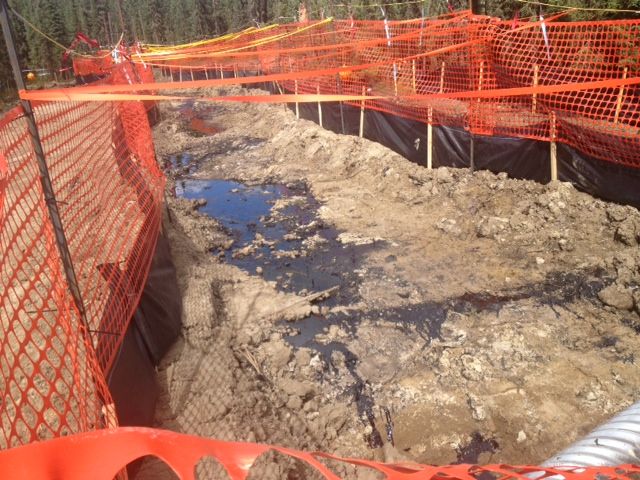CALGARY – Greenpeace says the regime of new Alberta Premier Jim Prentice is off to a bad start.

This, after Canadian Natural Resources Limited was given the go-ahead to resume work at an eastern Alberta site where a bitumen-water mixture was found oozing to the surface last year.
Greenpeace spokesman Mike Hudema says Monday’s decision by the Alberta Energy Regulator means Alberta is still unwilling to put the public interest ahead of oil industry lobbying.
CNRL says it will be using a different extraction technique at Area 1 of its Primrose East oilsands site – something called low-pressure steamflood rather than high-pressure cyclic steam stimulation, or HPCSS.
READ MORE: Steaming may have caused endless Cold Lake oil spills, CNRL admits
Environmental groups have questioned the safety of HPCSS. With that method — often described as “huff and puff” — a well alternates between injecting steam and drawing the softened bitumen to the surface.
With the modified method, steam is injected at less than half the pressure as HPCSS.
Company president Steve Laut says it isn’t possible for the modified method to create the same conditions that led to the leaks.
Increased monitoring and other steaming restrictions imposed by the regulator last summer remain in place and an investigation into what went wrong at Primrose is ongoing.
In depth, interactive: Crude Awakening – 37 years of Alberta oil spills
“If flow rates at the existing sites increase, or if new sites occur, the AER will immediately take action that may include ordering the company to stop steaming,” the AER said in a statement.
Some 1.2 million litres of the bitumen-water emulsion have been recovered and more than 20 hectares have been affected.
CNRL said last month that clean-up is complete.

Comments